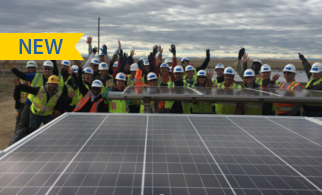Production Based Incentives
Guiding principles: Accessibility and Affordability, Sustainability and Flexibility, Compatibility and Integration
Barriers addressed: Cost
Production-based incentives, (PBIs) are incentives that are paid to solar generating system owners based on the energy that is generated by the system.
A common vehicle for the payment of PBIs, and one of the primary drivers of renewable energy development across the country, including projects that benefit low-income customers, have been state renewable electricity standards (RES) or renewable portfolio standards (RPS). These policies require that a certain percentage of the electricity consumed by the state’s customers come from renewable sources. Some of these policies also have a smaller percentage within the standard requiring a certain amount of solar in particular, often called a solar carve-out. Thirty-seven states have a mandatory or voluntary RES or RPS, with 29 of those and the District of Columbia’s being mandatory.
Solar projects benefit from an RPS or RES because the value of their renewable energy production is monetized in the form of renewable energy credits (RECs) that are purchased by electric utilities to meet their standard. If a solar carve-out is in place, solar projects generate solar renewable energy credits (SRECs) that are often more valuable than a generic REC. The generation and sale of credits may provide a financial incentive to solar projects, which could make them more economically beneficial to all customers, including low-income. These incentives can benefit the customer directly or be used by project developers or financial partners to subsidize the cost of financing for low-income customers.
RPS or RES program design can be used to further encourage low-income participation. Though it is being phased-out in 2018, Massachusetts’s SREC II program was successfully designed to spur solar development to serve low-income customers. The SREC II program, assigned a higher value credit to projects that serve owners or residents of affordable housing. Depending on certain rubrics, Massachusetts solar projects were able to receive an additional 70-100 percent of the baseline SREC value for power generated by low-income solar projects. This has made serving low-income communities a more financially viable and appealing market for nonprofits and solar developers. At the other end of the spectrum, programs with an overly time consuming and complicated process for qualifying and selling credits can limit the ability for low-income customers, who are often less financially literate, to access the benefits (Anderson, Steven G, Min Zhan, and Jeff Scott. 2004. “Targeting Financial Management Training at Low-Income Audiences: Bits, Briefs, and Applications.” Journal of Consumer Affairs 38(1): 167-177, June 22).
The Colorado Energy Office’s project to integrate solar photovoltaics into the Weatherization Assistance Program is an example of the inclusion of a PBI into a package of incentives to make affordable solar available to low-income families. Under this program, the installation of solar PV arrays will be funded using:
- Department of Energy funds under the WAP program of up to $3,545 per home;
- Up-front incentives from Public Service (Xcel Energy) in the amount of $2.50 per installed watt; and
- A PBI of 34 cents per kWh for the energy generated by the solar PV array.
See the discussion of the Colorado Rooftop Solar Photovoltaic Program for a more detailed discussion of the integration of solar PV into the WAP program.






